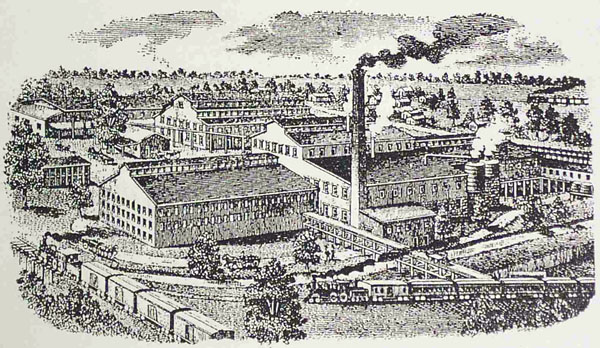The Ashland Distillery
RD #1, 7 th District
Fayette County, KY
(Est. 1866)

distillery search | pre-pro.com home
The Ashland Distillery |  |
|
Ambrose (2002) has extensively research this distillery and provides the history that follows. 1865: The Ashland distillery was established by Turner, Clay & Co., a company that comprised Horace H. Turner, Samuel M. Clay and Thomas Mitchell. The distillery was built on Manchester Street (Frankfort Pike) between Cox and Perry and was the first to obtain a federal register distillery license in Lexington (RD #1). It produced "Ashland" whiskey. 1871: Turner died and Turner, Clay & Co. was dissolved. Turner's estate included $17,745 received from the distillery, less liabilities of $11,364, for a net of $6,381. 1879: In May, a fire destroyed the distillery. Distilleries were always prone to fires given their wooden construction and the volatile nature of their products. This fire (and the Phoenix Hotel fire later in the month) forced the local business community to establish a waterworks to lower insurance rates. The waterworks provided a year round supply of water to fight fires. 1882: The company had 35 employees, paid $1.75 per day. The distillery was producing was approx. 45 barrels per day, mashing 300 bu of corn and 120 bu of rye and barley malt. The corn was purchased locally from Fayette County and generated an estimated $30,000 in sales for the local farmers. The rye and barley malt was purchased out west and shipped in on the railroad. 1884: Sam Clay, Jr. left the partnership. Distribution of the distillery's products were assumed by J. A. Lail & Company. 1888: In November, Wm. Tarr Co. was incorporated, owned by William Tarr (President: 40%), Thompson Tarr (Wm Tarr's son: 10%), Thomas J. Megibben (VP: 40%) and Joseph M. Kimbrough (Secretary: 10%). The firm capitalization was $100,000. 1890: Megibben and Kimbrough died and Tarr purchased their interests. Tarr continued as President, while his son was elected Vice President and J. B. Huffman was selected Secretary. Distribution was also shifted to R. S. Strader & Co. 1892: The company purchased the adjacent Lexington Distillery to acquire 10,000 barrels of bourbon in storage. The Lexington was demolished and the whiskey relocated to the company's warehouses. 1897: On January 1 the company issued $50,000 in bonds, secured by the company assets. At the time, directors were William Tarr and James S. Stoll. 1899: On February 20, the distillery was auctioned at a Master Commissioner's sale to Leonard G. Cox, of Graves, Cox & Co., for $60,001. He was bidding against G. G. White, distiller of Paris, Lewis LeBus, of Cincinnati, and Squire Basset, of the Fayette National Bank of Lexington, three of the larger creditors. Cox turned out to be a straw bidder for Charles H. Stoll and the Trust (KD&W). 1902: The Trust sold the Ashland to the Stoll & Co., who operated it until the company dissolved upon the death of its senior partners. 1908: The distillery was re-aquired by the Trust, who operated it until Prohibition. 1909: The inventory of the Ashland (18,000 barrels) was acquired by Maurice Greenbaum of Lousiville. He also acquired a small plot of land adjacent to Warehouse No. 1 and constructed a bottling house that bottled 40 barrels per day and was kept running for the next decade. Aliases that this distillery's product was sold under |

The Ashland distillery, ca. 1893
The Ashland Distillery provided product that was sold under the following aliases: Internal Revenue recorded warehouse transactions for The Ashland Distillery as follows:
( explain: origin of these records, letter codes )
Copyright © 2006-2024 www.pre-pro.com. All rights reserved.